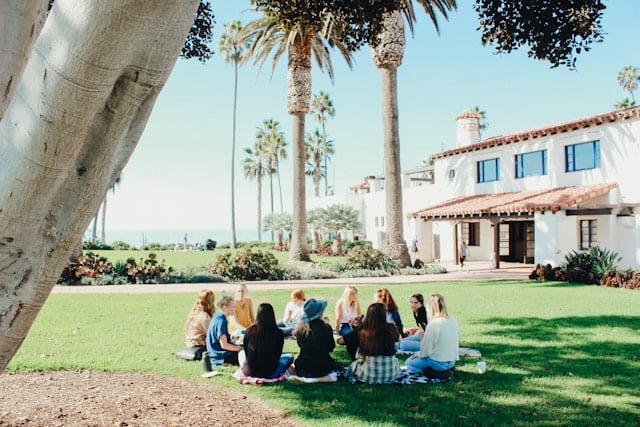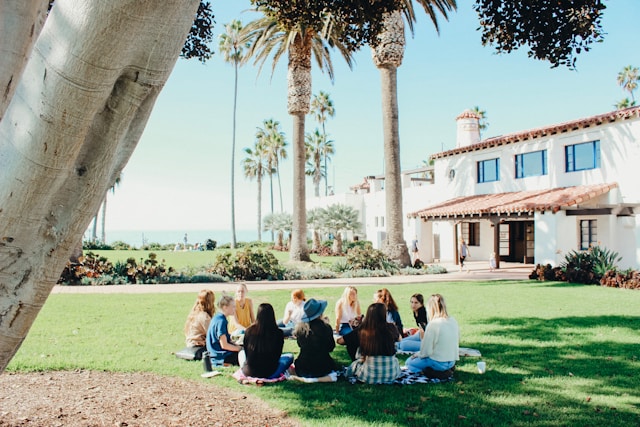
Gathering as a community is one of life’s simplest but most fulfilling joys. You’re surrounded by people who you see and interact with regularly in a more laid-back environment. You’re able to bond about shared experiences — like kids or hobbies — while also seeing new faces. These events are truly an opportunity to feel like you belong.
However, that doesn’t mean planning them is easy. If you’re tasked with organizing an upcoming community event, you know there’s much to consider. From ironing out logistics to creating safety plans, there’s no shortage of tasks at hand. Here are a few key pieces to help you as you navigate the planning journey and prepare to have a great event.
Know Your Audience
Depending on the group you’re planning the event for, you may need vastly different game plans. Families don’t want to go to a late-night event any more than retirees want to attend a gathering featuring blasting music. Knowing your audience and catering your event plans to align with them is critical to having a successful event.
Start by thinking through who will be in attendance. Then, spend some time determining what kind of event will best suit them. Consider the event location, timing, food, and other mission-critical aspects of your plans. That information can then be used to guide how you spend your time prepping for the big day.
Take a family event, for example. Parents with young kids will need a venue with enough room for the kids to run around. It is better if you can find a place with playground equipment for an even more engaging activity. You’ll also want the food and beverages to be a bit less fancy and more kid-focused. Grilled cheese, burgers, and juice pouches will often fit the bill.
Ultimately, the goal is to design an event that matches the interests and needs of your attendees. Take their interests, preferences, and needs into account every step of the way. Doing so makes sure everything goes off without a hitch.
Plan for the Unexpected
Even the best-laid plans sometimes fall to pieces. It’s frustrating, but true, and applies to community event preparation. Event planning is no easy task, from rain or weather concerns to last-minute vendor issues. That’s why planning for the unexpected as best you can is important.
As you craft the vision for the event, consider everything that could go wrong. An outdoor-only venue is much less enjoyable when it’s rainy or humid. An event hosted in the middle of everything may not be accessible if parking is a challenge. Having too little food may lead to early exits and unhappy attendees.
With your list in tow, you’re prepared to think through your backup event plans. If rain is in the forecast, can you overnight a pop-up tent or move the gathering indoors? Is it within budget to reserve a parking lot or splurge on valet to make parking a breeze? Could you stock up on packaged food to keep on hand in case your portions run low?
Of course, you hope to never have to use these second-choice options. But it’s always better to play it safe and have them in the back of your mind just in case. That way, no matter what, the event can go on.
Opt for Simple Food and Beverages
Food and beverage decisions are among the most fun but also the most stressful when it comes to planning events. You’re crunching the numbers to see how much you’ll need on hand so everyone can enjoy to their heart’s content. You’re trying to avoid having too much food so it doesn’t go to waste. It’s a lot to manage.
That’s where simple options come to save the day. Although you could aim to impress with gourmet dishes, they can complicate planning. Food allergies, preferences, and the logistics of maintaining unique food and drink choices make your life more difficult. Instead, focus on sticking with classic basics almost everyone loves.
It can be as easy as breaking your menu into a few categories. You’ll likely need drinks, proteins, sides, and something sweet. For drinks, opt for staples like water and soda and, if applicable, beer and wine for alcoholic options. Protein can be chicken or steak and a vegetarian option like pasta. Sides and sweet treats can be whatever pairs well with the rest of your meal. If you’re serving spaghetti, garlic bread and a salad are usually safe. Cake, pie, or a cookie are usually well received too.
Will this menu blow people away? Probably not. But at least you can have confidence that attendees will be well-fed. They’ll enjoy classics they know and love while focusing more on the event experience. And that is what builds community.
Enjoy Your Latest Hit Event
It’s no secret that pulling off an event of any size is a challenging feat. You’re juggling logistics and vendors, and promoting it while also aiming to bring your vision to life. Add in attendee expectations and preferences, and it becomes quite the hill to climb.
But when done strategically with these tips in mind, your next community event will go off without a hitch. Everyone will be thrilled to see what you’ve put together and enjoy the time spent engaging with others. That is really what it’s all about.
Interesting Related Article: “Fostering Community Engagement Through Local Business Reviews“









